Solitonic Solutions for Homogeneous KdV Systems by Homotopy Analysis Method
Abstract
We study two-component evolutionary systems of a homogeneous KdV equations of second and third order. The homotopy analysis method (HAM) is used for analytical treatment of these systems. The auxiliary parameter h of HAM is freely chosen from the stability region of the h-curve obtained for each proposed system.
1. Introduction
Applications in physics are modeled by nonlinear systems. Very few nonlinear systems have closed form solutions, therefore, many researchers stress their goals to search numerical solutions. Homotopy analysis method (HAM), first proposed by Liao [1], is an elegant method which has proved its effectiveness and efficiency in solving many types of nonlinear equations [2, 3]. Liao in his book [4] proved that HAM is a generalization of some previously used techniques such as the d-expansion method, artificial small parameter method [5], and Adomian decomposition method. Moreover, unlike previous analytic techniques, the HAM provides a convenient way to adjust and control the region and rate of convergence [6]. Recently, new interested applications of the homotopy analysis have been introduced by Abbasbandy and coauthors [7, 8]. Also, in [9] HAM is used to study the effects of thermocapillarity and thermal radiation on flow and heat transfer in a thin liquid film.
In what follows, we highlight the main features of the homotopy analysis method. More details and examples can be found in [7, 8, 15] and the references therein.
2. Survey of Homotopy Analysis Method
For the following numerical examples, we use Lj = ∂/∂t; H(x, t) = 1.
3. Two-Component Evolutionary System of Order 3: Type I
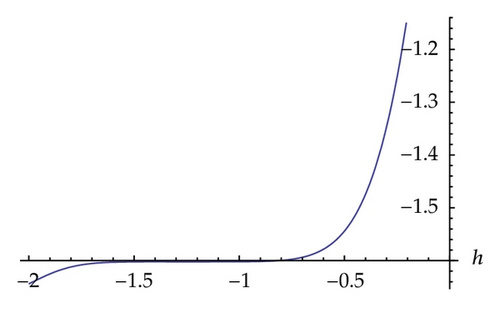
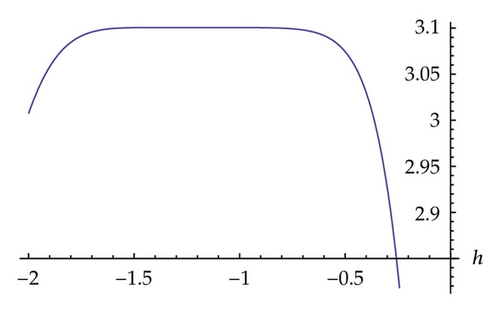
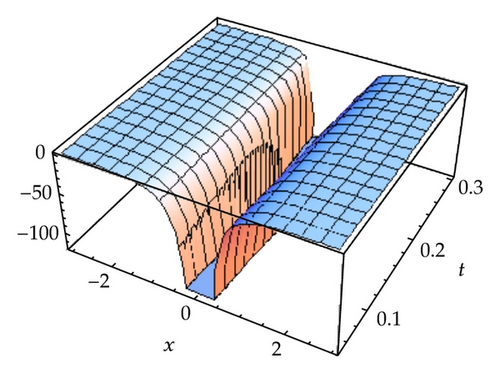
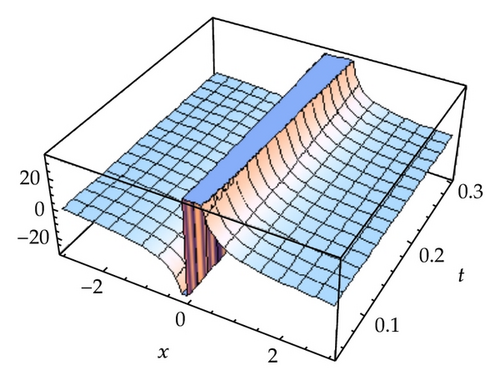
4. Two-Component Evolutionary System of Order 3: Type II
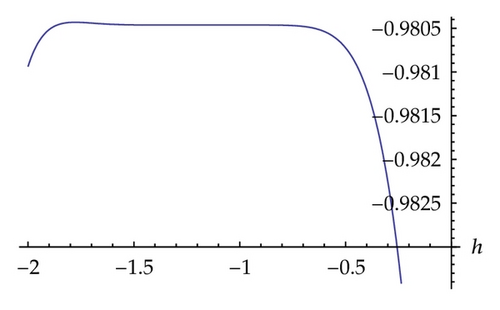
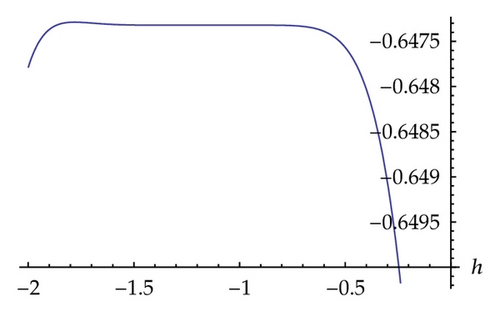
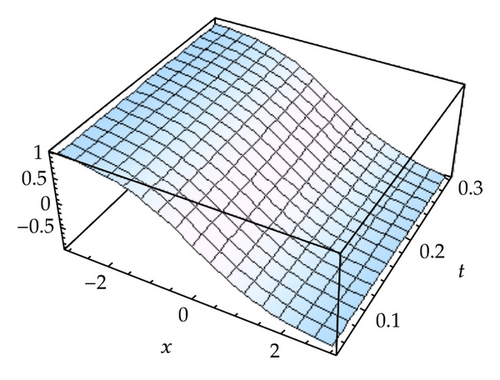
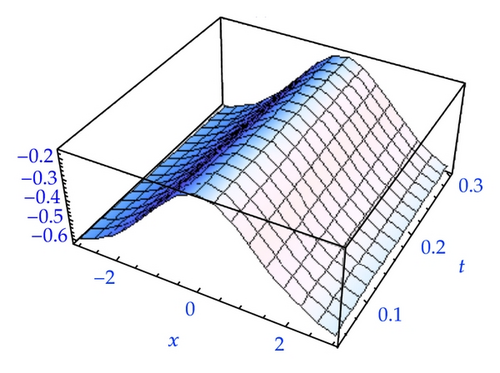
5. Two-Component Evolutionary System of Order 2
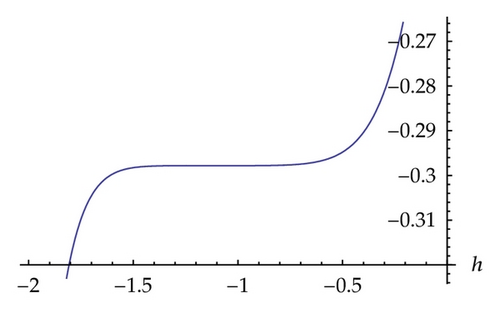
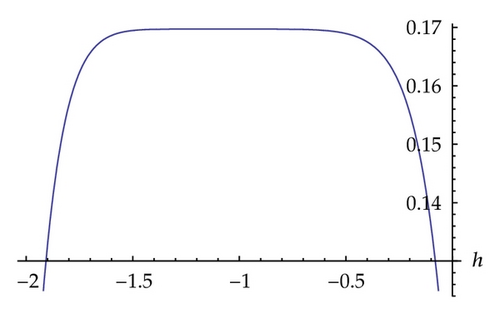
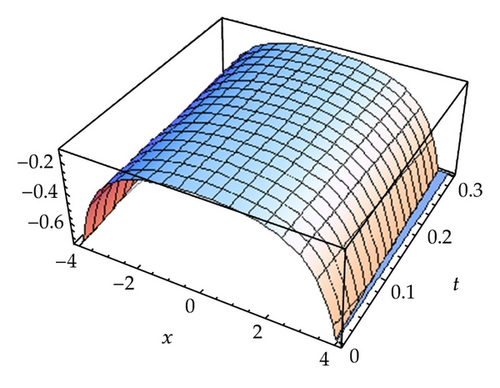
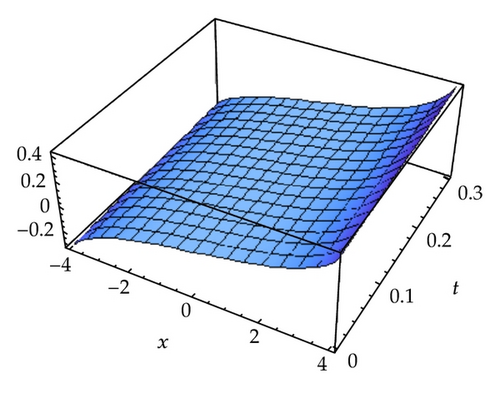
6. Discussion and Concluding Remarks
In this paper, we obtained soliton solutions for homogeneous KdV systems of second and third order by means of homotopy analysis method. The convergence region for the obtained, approximation, is determined by the parameter h as shown in Figures 1, 3, and 5, respectively, for systems ((1.1), (1.2), and (1.3)).
Homotopy analysis method provides us a convenient freely chosen with parameter h in contrast to the Homotopy perturbation method, where h is assumed to be −1. In this work, h has been chosen to be −1.1, − 1.3, and − 0.7, respectively, for systems ((1.1), (1.2), and (1.3)). It is worth noting that the choice of the parameter h in this paper is considered based on the obtained stability region of the h-curve for each system; for example, in system (1.1) the stability region of h falls between −1.5 and −0.7 and we considered the midpoint of this interval.
Finally, the absolute errors for the obtained approximate solution of system (1.1) are given in Tables 1 and 2.
| xi | tj | 0.05 | 0.1 | 0.15 | 0.20 | 0.25 | 0.30 |
|---|---|---|---|---|---|---|
| −6 | 4.32 × 10−13 | 4.09 × 10−12 | 2.05 × 10−11 | 7.48 × 10−11 | 2.24 × 10−10 | 5.86 × 10−10 |
| −4 | 7.77 × 10−12 | 7.78 × 10−11 | 4.14 × 10−10 | 1.61 × 10−9 | 5.16 × 10−9 | 1.44 × 10−8 |
| −2 | 3.43 × 10−10 | 6.30 × 10−9 | 5.54 × 10−8 | 3.25 × 10−7 | 1.46 × 10−6 | 5.40 × 10−6 |
| 2 | 1.25 × 10−12 | 1.99 × 10−12 | 1.92 × 10−12 | 5.76 × 10−12 | 1.29 × 10−11 | 1.98 × 10−11 |
| 4 | 9.23 × 10−14 | 1.59 × 10−13 | 5.30 × 10−14 | 4.45 × 10−13 | 3.79 × 10−13 | 7.06 × 10−13 |
| 6 | 5.52 × 10−15 | 9.60 × 10−15 | 2.88 × 10−15 | 2.67 × 10−14 | 2.02 × 10−14 | 4.30 × 10−14 |
| xi | tj | 0.05 | 0.1 | 0.15 | 0.20 | 0.25 | 0.30 |
|---|---|---|---|---|---|---|
| −6 | 2.67 × 10−12 | 1.51 × 10−11 | 5.27 × 10−11 | 1.45 × 10−10 | 3.46 × 10−10 | 7.47 × 10−10 |
| −4 | 1.17 × 10−11 | 7.21 × 10−11 | 2.81 × 10−10 | 8.87 × 10−10 | 2.44 × 10−9 | 6.15 × 10−9 |
| −2 | 1.22 × 10−10 | 1.62 × 10−9 | 1.21 × 10−8 | 6.42 × 10−8 | 2.68 × 10−7 | 9.44 × 10−7 |
| 2 | 6.19 × 10−13 | 3.18 × 10−12 | 5.02 × 10−13 | 6.58 × 10−12 | 1.03 × 10−11 | 2.23 × 10−12 |
| 4 | 1.61 × 10−13 | 7.90 × 10−13 | 8.33 × 10−14 | 1.39 × 10−12 | 1.70 × 10−12 | 3.50 × 10−13 |
| 6 | 3.93 × 10−14 | 1.92 × 10−13 | 2.42 × 10−14 | 3.34 × 10−13 | 4.01 × 10−13 | 1.00 × 10−13 |




